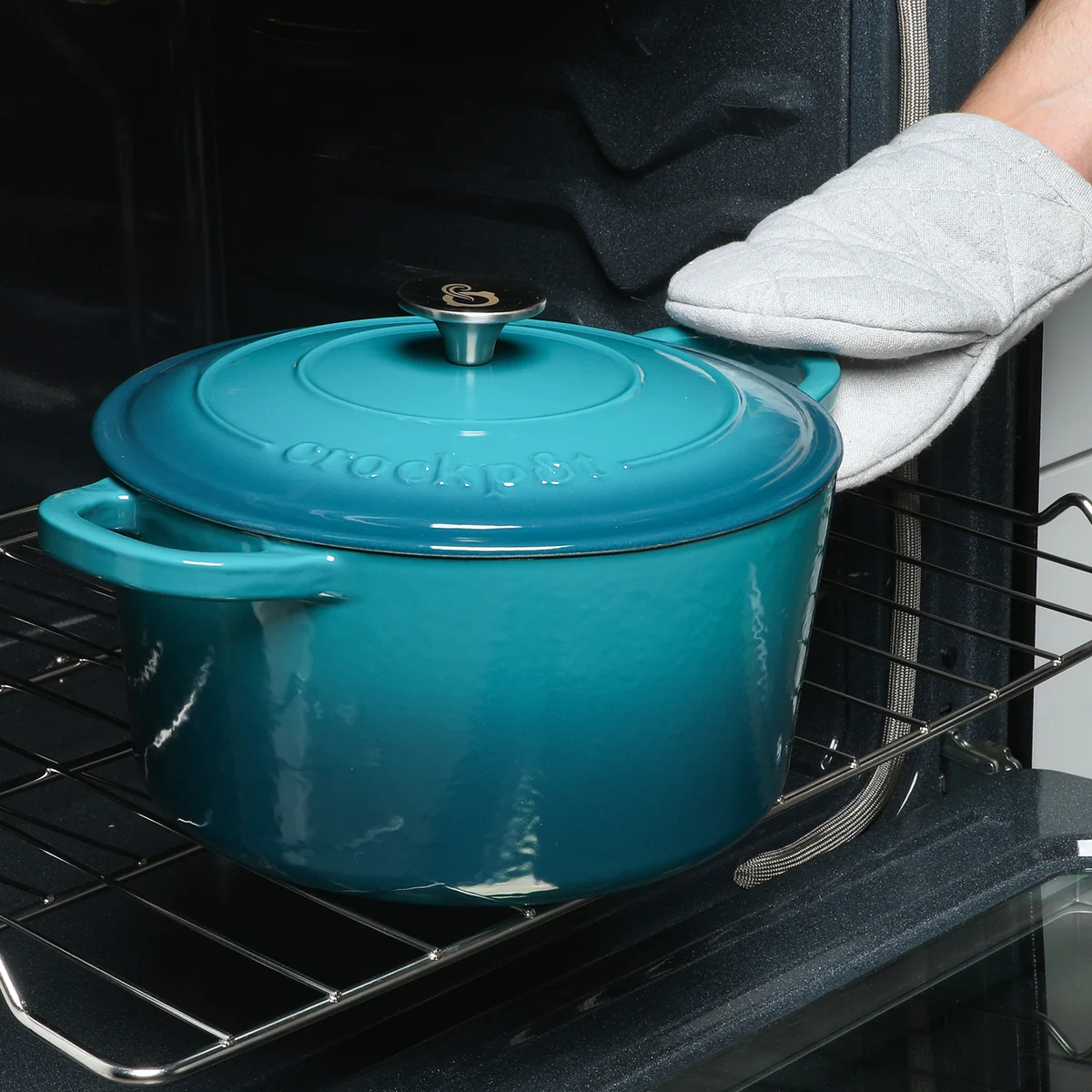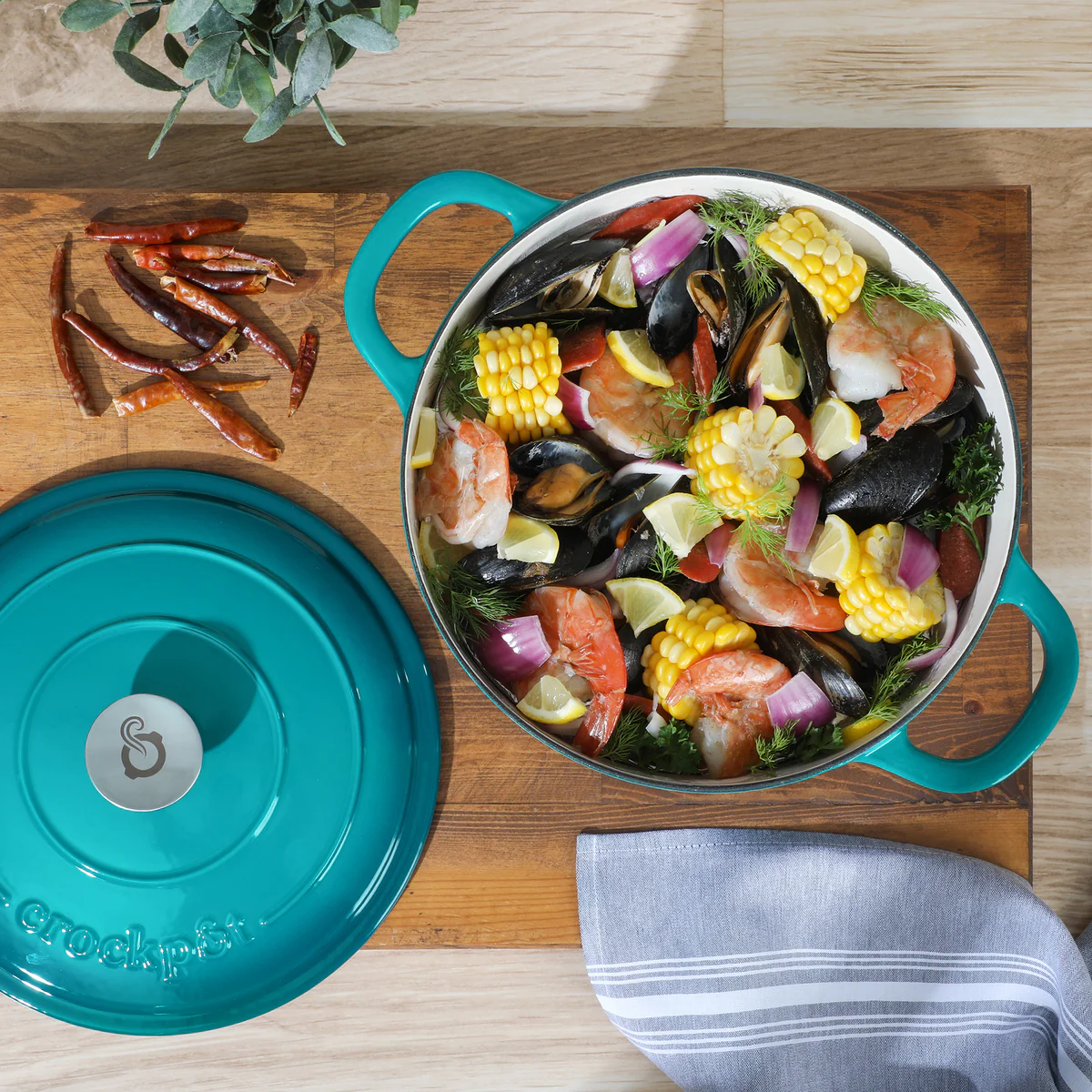There’s a certain magic to a slow cooker, isn’t there? The promise of a “set it and forget it” meal, a kitchen filled with mouth-watering aromas, and a perfectly tender pot roast waiting for you after a long day. But what happens when that promise is broken? You follow a recipe to the letter, set it for eight hours on low, and come home four hours later to find a dry, overcooked, or even burnt dinner. It’s a frustrating experience that might have you asking, Why Does My Slow Cooker Cook So Fast?
Believe me, you’re not alone. I’ve been there. I still have flashbacks of a pulled pork that turned into pulled mush because my slow cooker was running way too hot. The good news is, it’s usually not you—it’s your slow cooker. In this guide, we’re going to dive into the common reasons behind a speedy slow cooker and give you the practical tips you need to reclaim control and get back to making those delicious, hassle-free meals we all love.
Understanding How a Slow Cooker Should Work
Before we troubleshoot, let’s quickly touch on the basics. A slow cooker isn’t a complex piece of machinery. It consists of a ceramic or porcelain pot, a heating element in the base, and a glass lid. The appliance slowly cycles power on and off to maintain a consistent, low temperature.
- Low Setting: Typically reaches a simmer around 200°F (93°C).
- High Setting: Reaches that same simmer temperature, but gets there much faster.
The goal isn’t to boil food, but to hold it at a steady, food-safe temperature for hours, allowing tough cuts of meat to break down and flavors to meld beautifully. If your food is boiling vigorously, something is definitely off.
The Main Culprits: Why Your Slow Cooker Cooks Too Fast
Let’s get to the heart of the matter. If you’re constantly finding your eight-hour recipes are done in four, one of these culprits is likely to blame.
Reason 1: Newer Models Simply Run Hotter
This is the number one reason I see. If you recently replaced an old, beloved slow cooker from the 80s or 90s, you’ve probably noticed a huge difference. Due to updated food safety guidelines aimed at preventing bacterial growth, manufacturers have increased the wattage and thermostat settings on modern slow cookers. They are designed to get food past the “danger zone” (40-140°F or 4-60°C) more quickly.
“Many home cooks are surprised to learn that today’s ‘low’ setting is often as hot as the ‘high’ setting on a vintage model. It’s a shift in design philosophy, prioritizing food safety, which means we have to adjust our old family recipes.” – Sarah Carter, family meal prep blogger.
- The Fix: You need to get to know your new appliance. Start by reducing cooking times. If a recipe calls for 8 hours on Low, check it at the 5 or 6-hour mark. You may need to consistently shave 25-30% off the cooking times of older recipes.
Reason 2: The Slow Cooker Isn’t Full Enough
Have you ever tried to cook a single chicken breast in a huge 7-quart slow cooker? A slow cooker works best when it is between half and two-thirds full.
Think of it like heating a small pot of water versus a large one on the stove. The small pot boils much faster. When a slow cooker is mostly empty, there isn’t enough food mass to absorb and distribute the heat. The heating element keeps cycling on, quickly overheating the small amount of food inside.
- The Fix: Match your slow cooker size to the recipe. If you mostly cook for one or two people, a smaller 2 to 4-quart model is a fantastic investment. If you’re stuck with a large model, try to double the recipe (and freeze the leftovers!) or use an oven-safe glass or ceramic dish placed inside the slow cooker to create a smaller cooking environment.
Reason 3: Not Enough Liquid
Liquid is the key to temperature regulation in a slow cooker. It helps distribute the heat evenly and prevents the direct, intense heat from the element from scorching your food. If a recipe is too dry, hot spots will form, and the food at the bottom will cook incredibly fast and may even burn.
- The Fix: Ensure you have at least a half-cup to a full cup of liquid (broth, water, tomato sauce) in the bottom of your slow cooker, especially for lean meats like chicken breast. Root vegetables like potatoes and carrots at the bottom also help lift the meat off the direct heat source. For some inspiration on balanced meals, check out our favorite [one-pot slow cooker dinners].
Reason 4: The Lid Doesn’t Fit Properly
The lid is crucial. It traps steam and moisture, creating a hot, humid environment that helps cook the food gently and keeps it from drying out. If your lid is chipped, warped, or just doesn’t sit flush, that precious steam escapes.
When steam escapes, the temperature inside the cooker drops. The thermostat senses this and tells the heating element to turn on more frequently to compensate, leading to a hotter, harsher cooking cycle that can dry out your food.
- The Fix: First, check for damage. If the lid is broken, it’s time for a replacement. You can often buy them directly from the manufacturer. If it’s just a bad fit, try this old-school trick: place a layer of aluminum foil over the top of the ceramic pot before putting the lid on. This creates a much tighter seal.
How to Test Your Slow Cooker’s True Temperature
Tired of guessing? You can perform a simple water test to figure out exactly why does my slow cooker cook so fast and if it’s running too hot.
- Fill it up: Fill your slow cooker about two-thirds full with tap water.
- Cover and cook: Put the lid on and turn it to the LOW setting.
- Wait it out: Let it heat for 8 hours. Do not open the lid during this time.
- Take its temperature: After 8 hours, carefully remove the lid and immediately use an instant-read thermometer to check the water temperature.
A properly calibrated slow cooker should have a water temperature between 185°F and 200°F (85-93°C). If your water is well above 200°F, nearing a boil, you have a hot-running model. If it’s below 185°F, it may be running too cool (which is a food safety concern).
Pro Tips for Taming a Hot Slow Cooker
So you’ve confirmed your cooker runs hot. Don’t throw it out! You can still make amazing meals by adjusting your technique.
- Reduce Cooking Times: This is the easiest fix. Start checking your meals much earlier than the recipe suggests.
- Use the LOW Setting Exclusively: For many modern cookers, the LOW setting is more than sufficient for almost any recipe. The HIGH setting will often bring things to a full boil.
- Add More Liquid: A little extra broth can act as a buffer against the intense heat. You can always thicken the sauce at the end if needed. Find out how in our guide on [how to thicken slow cooker sauces].
- Use a Timer: Don’t rely on the “Warm” setting. Invest in an outlet timer that will shut the slow cooker off completely after a set number of hours. This is a game-changer for people who are away from home for 10+ hours a day.
Frequently Asked Questions (FAQ)
Q1: Is my slow cooker broken if it cooks so fast?
Not necessarily. As we’ve covered, most modern slow cookers are designed to run hotter for food safety. If the water test shows it’s holding a steady temperature (even if it’s a high one), it’s likely functioning as designed. If the temperature fluctuates wildly or it boils water in just an hour or two on low, it could be a faulty thermostat.
Q2: Can I just cook everything on the WARM setting?
No, this is not safe. The “Warm” setting is designed only to keep already cooked food at a safe serving temperature (above 140°F / 60°C). It is not hot enough to actually cook raw food safely and could allow harmful bacteria to grow.
Q3: How do I convert a recipe from HIGH to LOW?
A good rule of thumb is that 1 hour on HIGH is roughly equal to 2 hours on LOW. So, if a recipe calls for 4 hours on HIGH, you can usually cook it for 8 hours on LOW. If your cooker runs hot, you may need to adjust that to 6-7 hours on LOW.
Q4: Does the shape of the slow cooker matter?
Yes! Oval slow cookers are better for larger cuts of meat like roasts or whole chickens. Round slow cookers are great for soups, stews, and chilis. An oval cooker that is underfilled can have more surface area exposed to direct heat, potentially causing it to cook faster.
Q5: Should I start with hot or cold ingredients?
Always start with cold or room temperature ingredients. Adding boiling broth or pre-seared hot meat will give your slow cooker a huge head start, significantly reducing the total cooking time and potentially leading to overcooking. The “slow” part of the process is key.
Your Path to Slow Cooker Success
It can be a real letdown when your trusty kitchen assistant seems to have a mind of its own. But by understanding the common reasons why does my slow cooker cook so fast, from modern manufacturing standards to simple things like fill level, you can regain control.
Don’t give up on that dream of effortless, delicious meals. Perform the water test, get to know your machine’s quirks, and start adjusting your recipes. Soon enough, you’ll be back to enjoying perfectly tender, flavorful food, all thanks to the magic of cooking low and slow—at the right speed.
Have you ever battled a speedy slow cooker? What tricks have you learned? Share your experience in the comments below! We’d love to hear from you.
